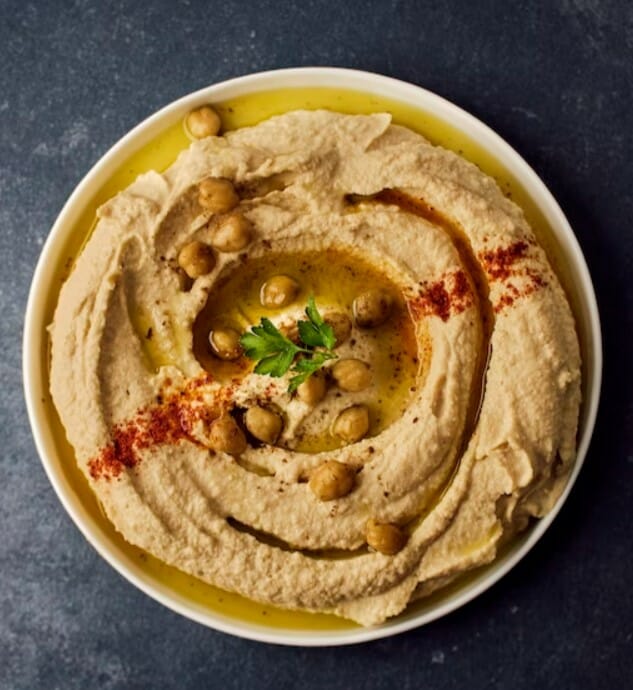
Creamy hummus is my favorite go-to snack with veggies!
I also use it as a spread in my egg white wraps instead of mayonnaise or mustard for an extra hit of protein and fiber.
Hummus is an ancient Middle Eastern recipe made from pureed chickpeas. It usually contains additional flavoring agents — typically tahini, lemon juice, salt, and an oil.
Many types of hummus include additional ingredients, such as red pepper, ground garlic, or nuts.
Four Health Benefits of Hummus
# 1 Boosts Protein
Hummus is a great source of plant-based protein that vegetarians and vegans can incorporate into their diets.
# 2 Balances Blood Sugar Spikes
With a great blend of protein and “slow” carbohydrates, hummus does not spike your blood sugar and satisfies your cravings.
# 3 Helps Appetite Cravings
it is better than reaching for high carb snacks that quickly rise your blood sugar and induce a craving fo rmore!
# 4 Nutrient Dense
Hummus is high in several important nutrients, including fiber and protein. Hummus contains a number of healthy ingredients, especially compared with other popular snack foods.
Ingredients
- 1 can (19 oz) sodium-reduced chickpeas, drained and rinsed
- ¼ cup tahini (sesame seed paste)
- 1 tsp ground cumin
- ¼ cup sodium-reduced vegetable broth
- ½ tsp grated lemon zest
- 1 tbsp lemon juice (about ½ lemon)
- 2 tbsp water (or more as desired)
- 1 clove garlic, minced
Directions
- In a food processor, combine chickpeas, tahini and cumin. Pulse until coarse.
- Add broth, lemon zest, lemon juice, and water. Pulse until smooth; add more water as necessary for a creamy texture.
- Stir in garlic.

Yummy Hummus Variations
Take hummus to the next level with these fantastic variations:
- Roasted red pepper hummus: Omit tahini and use 1 cup chopped roasted red peppers instead.
- Herbed hummus: Stir in ¼ cup chopped herbs, such as basil, parsley, cilantro or mint.
- Sundried tomato hummus: Add ½ cup soaked sundried tomatoes, and use the reserved soaking liquid instead of the vegetable broth.




























